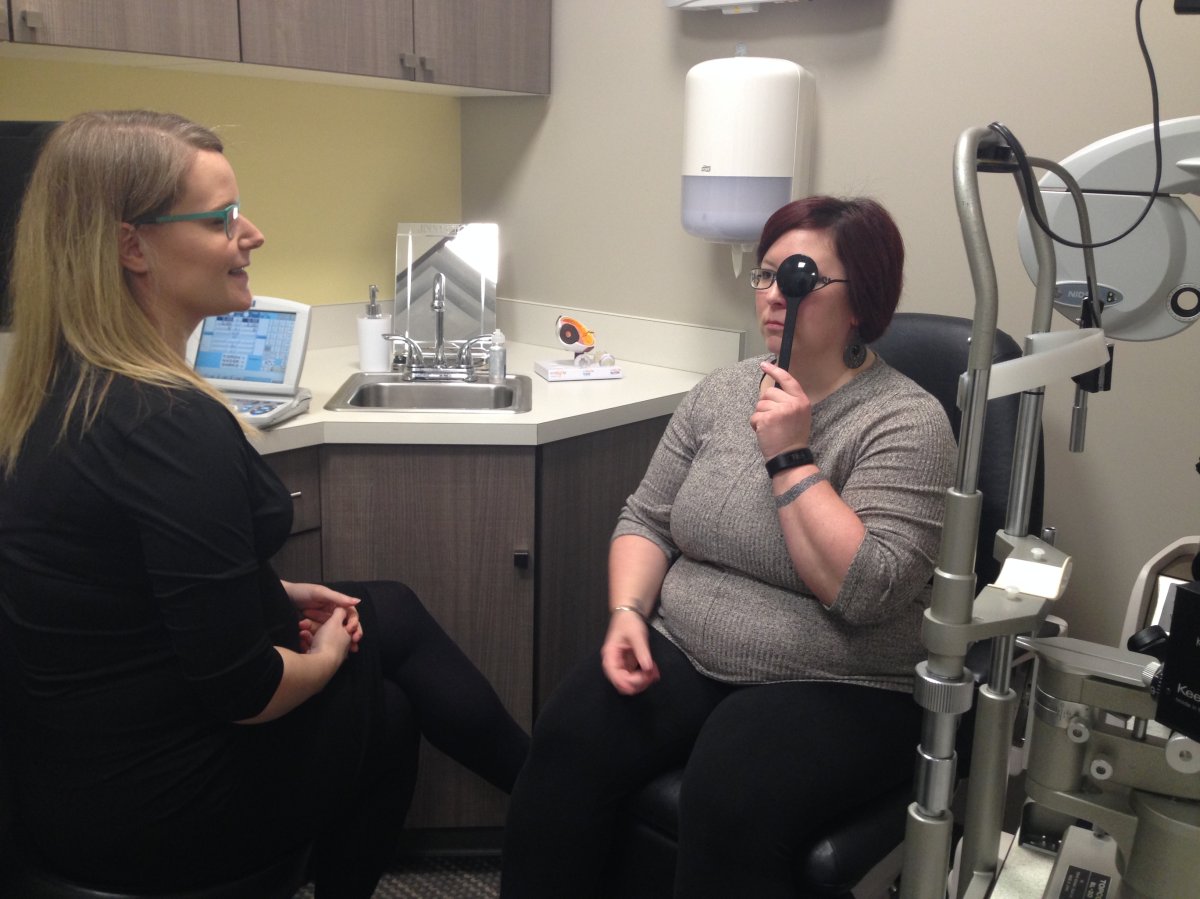Whether it’s a smartphone, tablet, computer or television – spending too much time looking at a screen can damage your eyesight.

A new study by the Vision Council suggests even spending just two hours a day in front of a screen can strain the muscles in your eyes.
Donna McRae was diagnosed with digital eye strain one year ago.
“I was still a student and I noticed I was having a hard time readjusting from the board to the computer,” she said.
McRae’s eyes were always dry and sometimes they would sting.
“I was starting to get headaches, just from my eyes having to strain so much and my muscles having to work that much harder. It made doing my readings and my homework a bit harder.”
The nursing student was spending more than six hours a day looking at her tablet, cellphone, computer and television. When she received her diagnosis, she was not surprised that her electronics were negatively impacting her sight.
The Vision Council found 65 per cent of the people surveyed for the study are experiencing digital eye strain symptoms. Edmonton optometrist, Dr. Sarah Keep, thinks that number may even be low.
“It’s something that we see on a daily basis. Patients come in all the time and they have certain symptoms that are linked to computer use,” she explained. “We see anything from dry eye issues, to issues with head and neck pain, blurry vision.”
The reason too much screen time is bad has a lot to do with the type of light they give off.
“They emit different light than we are used to. Blue violet light is emitted from the digital devices. Not only can that contribute to eye strain, but we’re also thinking it can contribute to diseases in the back of the eyes as patients get older,” Dr. Keep said.
If caught early enough, the symptoms can often be treated and the condition reversed.
McRae said she put off a follow-up appointment with the optometrist for months and regrets that now.
“I think it’s important people realize how important it is for people to go to their regular eye appointments and make those appointments with your doctor for follow-ups. The longer you wait, the worse things can get.”
Her eyes are being treated with special drops and she now wears glasses with blue-light blocking lens filters.
Dr. Keep said there are a number of ways patients can protect themselves from digital eye strain, including taking frequent breaks from screens.
“We love suggesting the 20-20-20 rule. So for every 20 minutes you spend on a computer, take 20 seconds and glance at something 20 feet away to relax the eye muscles.”
Eye drops also help because they help lubricate the eyes. When looking at screens, Dr. Keep said people tend to blink less often.
“Computer screens, we usually recommend them being at arm’s length and digital devices, we encourage people not to hold them so close to their eyes. We want to push them away a little bit so it’s not causing as much strain on the eyes,” she said.
Reducing the brightness of electronic screens and increasing font size can also help.
This isn’t just a concern for adults. Dr. Keep said she’s seen children in elementary school experiencing symptoms of digital eye strain.
The Vision Council’s study found adults under the age of 30 have the highest rates of strain.


Comments